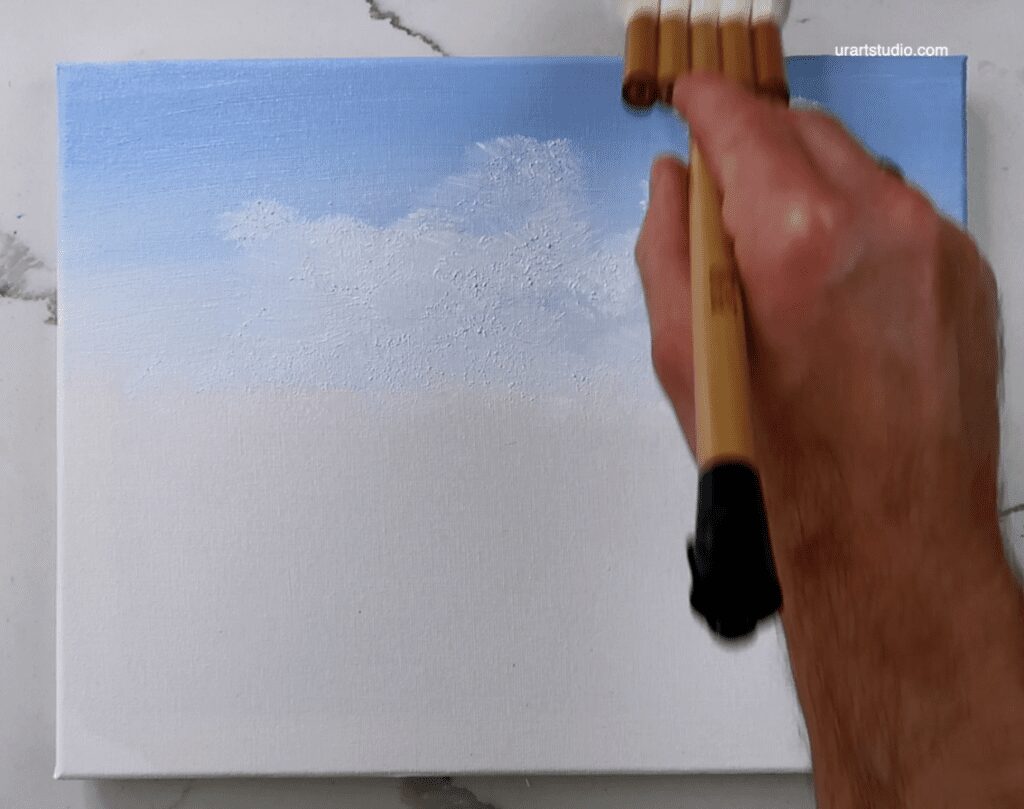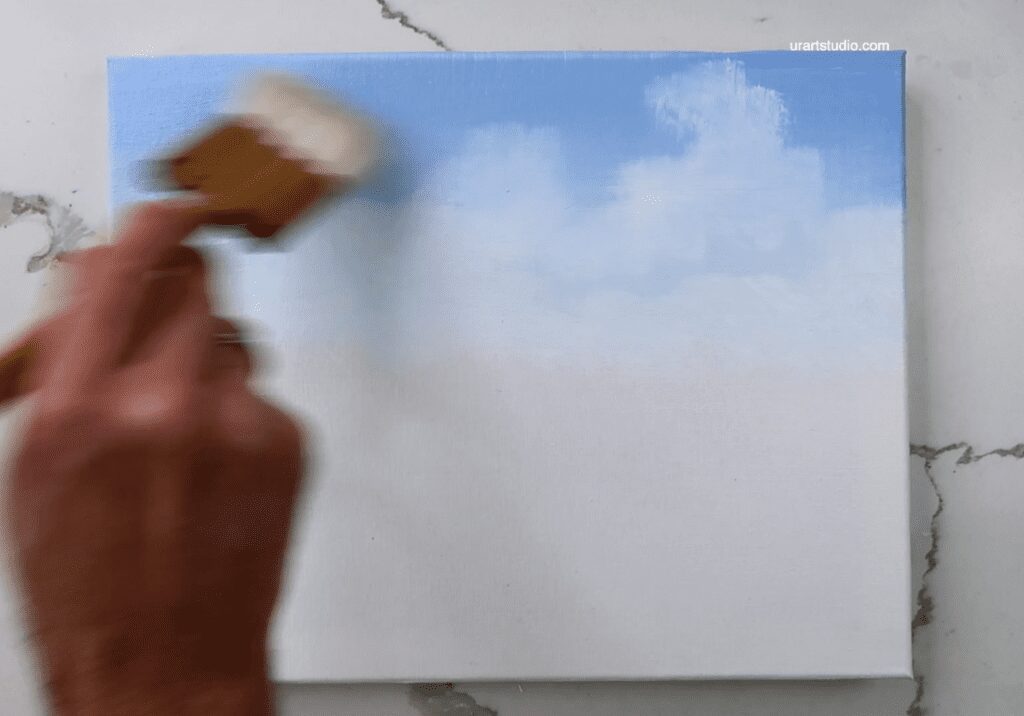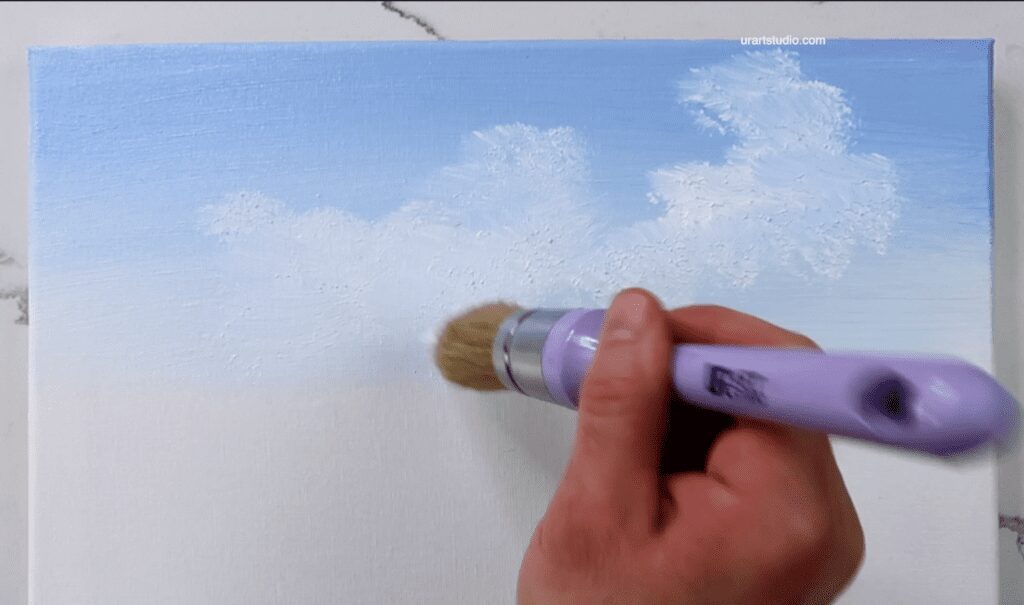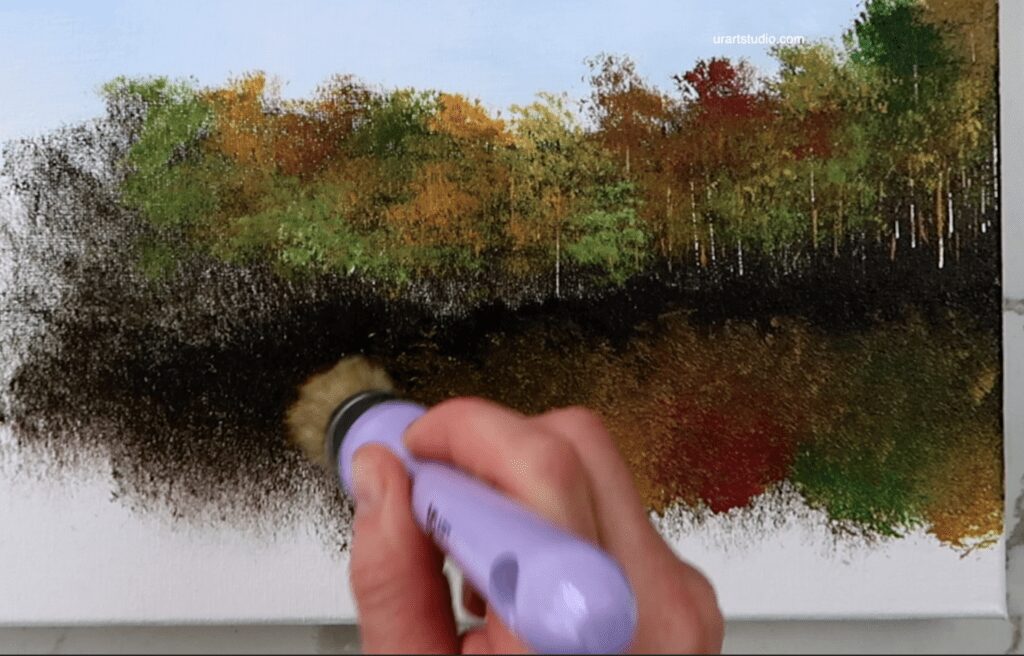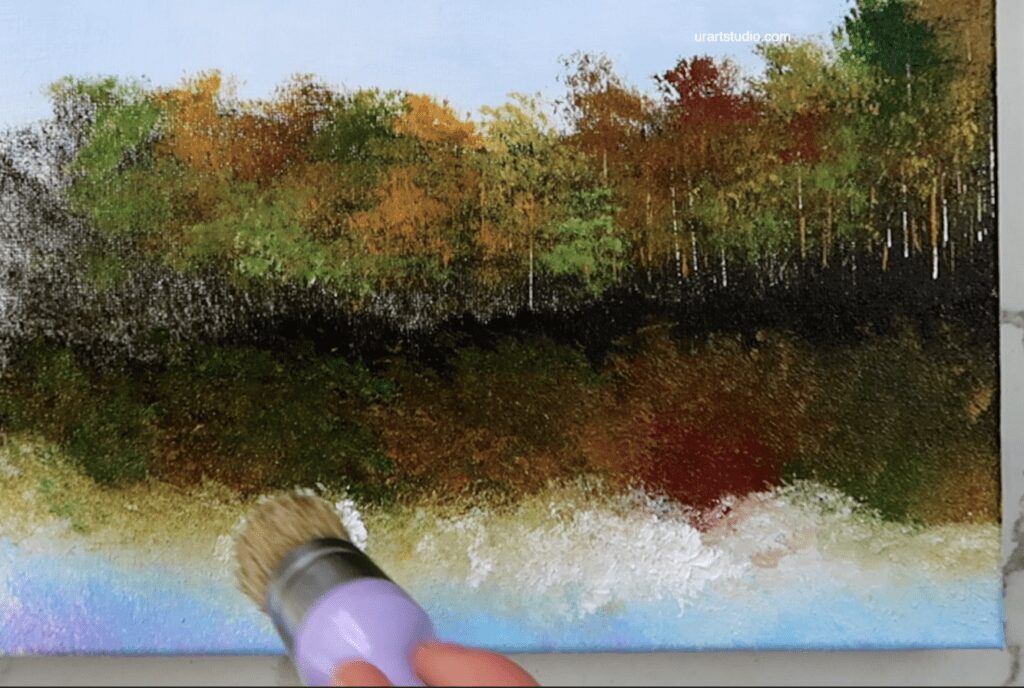- One of the most frequent questions is when to use a dry vs. wet paintbrush.
- Considering that we are working with acrylic paint, we prioritize maintaining our paint in workable condition for as long as possible. This requires keeping the color reasonably moist with water.
- When using a big oval brush, rinsing your paintbrush in clean water and shaking off any access water before blending on the canvas would be helpful.
- However, remember that too much water will dilute your acrylic paint.
- In blending with a big oval brush, rinsing your brush between each blending application would be best. When using ultrasoft paintbrush, you want it to be dry for best blending results.
- To prolong the life and usability of your paintbrushes, make sure to wash all your paintbrushes immediately after each use.
- In addition to mentioned above, there is another aspect of using a dry vs. wet paintbrush.
- Specifically, the dry brush technique involves using a brush that contains minimal or no moisture, resulting in a rough and textured brushstroke. This technique is ideal for creating fine details, adding texture, and emphasizing intricate lines in a painting.
- On the other hand, the wet brush technique involves saturating the brush with ample amounts of water or paint medium. This technique allows for smooth and controlled brushstrokes, creating a more fluid and blended appearance.
- It is commonly used to create soft gradients, blend colors seamlessly, and achieve a more realistic and cohesive artwork.
- Whether artists employ the dry brush or wet brush technique, both methods offer distinct advantages in achieving different visual effects and conveying varied emotions within a painting.
.

